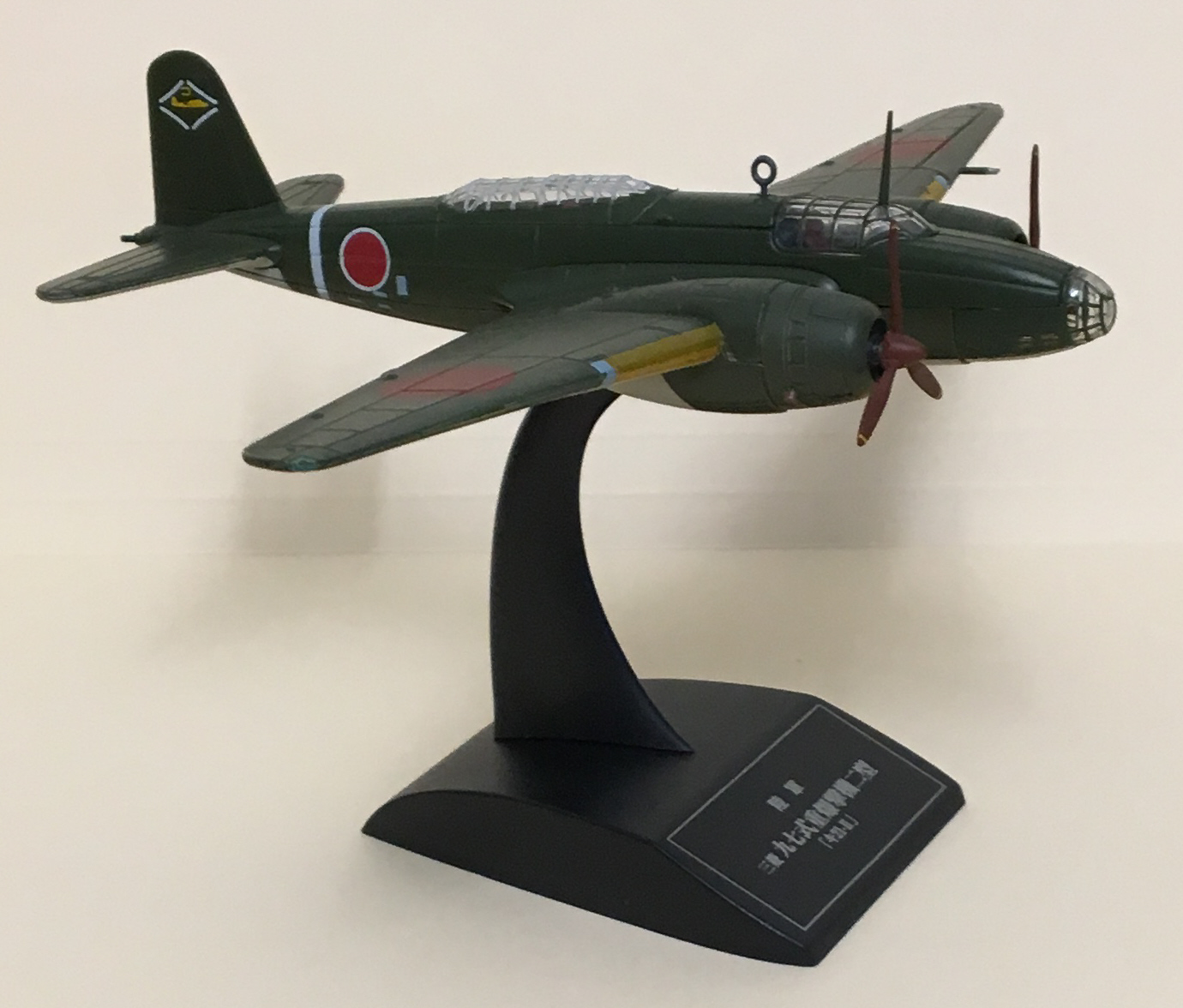
The Imperial Japanese
Navy commissioned the G3M "Nell" medium bomber in 1935. At the same
time and, not to be outdone, the Imperial Japanese Army
commissioned the Ki-21 heavy bomber. The Ki-21 was much faster
than the Navy's G3M and carried a larger payload as well. It was used
during effectively in the years leading up to WWII, but was extremely
vunerable to enemy fighters. So the Ki-21 was revised to include larger
control surfaces, rudimentary self-sealing fuel
tanks, and a couple more machine guns. This version, known as the
Ki-21-IIa (shown below) was used during the first year of WWII where it
faced meager assault from the Brewster F2A Buffalo. However, once it
began to encounter the Curtiss P-40 Warhawk, Mitsubishi had to tweak
the design again including the replacement of the dorsal observation
canopy (because, you know, sight-seeing) with a rotating gun
turret. The final version (Ki-21-IIb) only remained in service through
1942 before most were sent retrofitted as transports or sent back to
Japan for training purposes. A total of 2,064 Ki-21 aircraft were
built by Mitsubishi (1,713) and under license by Nakajima
(351).
MITSUBISHI Ki-21-IIa Type 97 "Sally"

Class: Medium Bomber
Crew: 7
Engine: 2 x Mitsubishi Ha-101 14-cylinder twin-row radial (1,500 hp each)
Max Speed: 302 mph at 19,685 ft
Climb Rate: 1,485 ft/min
Service Ceiling: 32,810 ft
Range: 1,678 miles
Armament: 5 x .303 inch machine guns (nose, left and right fuselage, dorsal canopy,
Model Scale: 1:120